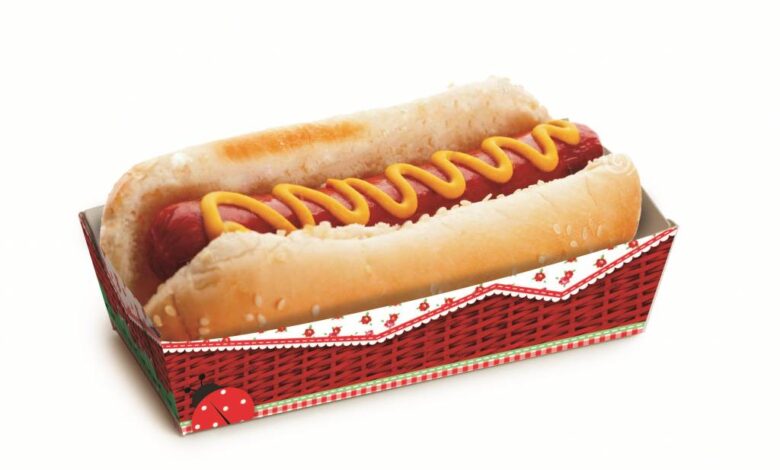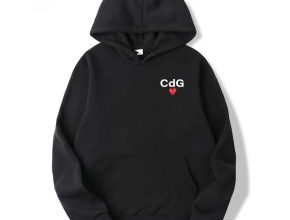Why Packaging Is a Silent Salesperson for Food Businesses?

Packaging plays a role in grocery companies that extends beyond preserving only products. It acts as a silent seller, affects the choice of customers, and shapes ideas without the need for words or direct interactions. Even before the food tasting or smells, the packaging provides the first point of contact and informs about important information that can attract or support buyers. The effective packaging provides a message of quality, safety, and brand values, and provides a experience that prepares customers inside. In crowded shelves, packaging can make a product stand out in a competitive environment by creating visual interest and construction recognition. Beyond physical stores, the packaging continues the story of a brand at home through takeouts, delivery, or retail. For companies and start-ups in the United States, customized packaging solutions such as Packlim to Custom dye-cut boxes provide a means of combining security..
The Informational Role of Packaging
Packaging is the primary method of communicating important product details to customers. This required information, such as a list, nutrition facts, serving suggestions, and allergen warnings, allows customers to make measures to their health requirements. As nutrition labeling helps buyers to look the product benefits and support people with specific dietary restrictions or moral concerns.
In addition to the basic product details, the packaging also plays a role in ensuring safety and freshness through sealing, expiration dates, and handling instructions. Customization’s best characteristics and certificates shows that the product has not been compromised to buy the product from production. This insurance reduces the customer’s fear of food security, creates self-confidence, and faith.
Packaging must follow legal requirements. The well-designed information placement ensures that the labels are readable and easy to understand, reducing the confusion at the point of sale. In addition, packaging acts as an educational platform in recycling, proper storage, or recipe ideas, which adds value that improves the customer experience and encourages repeated business.
Packaging’s Impact on customer Behavior
Packaging has a direct impact on customer behavior, which affects the decisions made in seconds on a packaging shelf. The first impression created by packaging can capture the eye of a shop owner using the color schemes, typography, images, and shapes that express the brand identity or product quality. Forced to stop and evaluate a product despite several competitive alternatives, despite many competitive alternatives.
The packaging mark also establishes stability that helps customers recognize famous products quickly. When customers show their favorite brands equally, it triggers subconscious recognition and promotes loyalty. In markets with countless food options, specific packaging acts as a shortcut to create trust without the need for oral explanation.
Descriptions such as texture, weight, and easy opening affect the specific experienced aspect of packaging. A package that feels strong and simple combines the perceived quality and convenience of handling, which encourages choices. Misleading packaging can separate customers and destroy confidence in the product price.
Packaging can communicate values that looks emotional or socially motivating. Customer showing organic certification, fair trade requirements, or repeated symbols targeting customer segments that focus quickly on environmental and moral purchase. These non-verbal message signals allow brands to contact buyers beyond taste and price, which affects long-term preferences.
The Functional Benefits That Support Sales
The protective character of the packaging ensures that the food is safe and under good conditions from production to consumption, which directly supports sales and customer satisfaction. Effective barriers guard against pollution, moisture, oxygen, and physical damage that can destroy quality or appearance. This protection reduces food waste, reduces returns, and creates a reputation.
Functions in the packaging increase the customer experience by making it easier to use and store products. Reusable bags keep snacks fresh between uses, while the portion-controlled packages offer prepared portions favorable for a busy lifestyle. Features such as easy use tab or microwave security provide practical values that customers appreciate, and often affect purchase decisions.
Stability plays an increasing role in packaging design and customer choices. Marks that offer recycling, or low-plastic packaging can looks to eco-friendly buyers, positioning products as responsible. Several shop owners are looking for brands that match their values on environmental impacts, which provides the benefit of these products in competing retail outlets.
The quality of the packaging affects not only customers’ opinion, but also logistics efficiency. Durable packaging reduces breakdown during transport and storage, reducing the total costs and environmental footprints. Companies benefit from financial and reputation by choosing packaging that balances safety with stability and marketing requirements.
Packaging as a Branding and Marketing Tool
Packaging acts as a powerful branding and marketing platform that effectively communicates the brand without direct interaction. The brand logo can customize packaging with specific colors, taglines, or artistic graphics that create a consistent appearance in products and markets. This consistent visual language increases the brand’s identity and establishes a professional, reliable image.
Beyond the logo location, the story of a brand can be told through packaging images, messages, or design elements that are emotionally linked to customers. Some brands use packaging to highlight the product improvement, craft properties, or commitment to stability, strengthening the customer’s perception of stories.
Creative packaging design, Open marketing opportunities beyond traditional advertising. Limited versions, seasonal themes, or collectibles encourage customers to join the brand repeatedly. Packaging may also include digital touch points such as QR codes or social media handles that invite customers to discover deep brand experiences online.
How Packlim Supports Food Businesses with Packaging Solutions
The imposed package provides adaptable packaging solutions for grocery companies throughout the United States, which helps them combine product protection and marketing expressions. His custom Hot Dog boxes show how packaging can be designed to protect foods while offering a branding and marketing platform.
The imposed package offers a wide range of packaging options, including boxes, packages, bags, and trays, manufactured with materials that follow food safety rules. Their services include flexible print options, which enable companies to adapt to packaging with logo, colors and product information to have product information to maintain brand stability and visibility.
All sizes of companies, from startups to established companies, benefit from the adaptable order volume and permanent packaging options. This allows brands to fulfill the commercial budget by developing the customer’s expectations of packaging responsibility.
Food companies that use packaging solutions can ensure that the products remain healthy and intact during shipping and handling. By combining practical functionality with attractive design, legend supports brands to create permanent impressions through the packaging, actually making it a quiet seller.
Conclusion
Packaging is a silent but powerful salesperson for food businesses, combining vital information, visual attraction, product protection, and brand promotion into one tool. It influences buyer choices subtly but effectively, driving sales and building trust without spoken word.
Investing in packaging that is thoughtfully designed to balance communication, functionality, and branding gives businesses an edge in competitive markets. Businesses and startups in the USA find value in working with suppliers like Packlim that offer customizable, functional packaging options, such as Custom packaging boxes designed to meet diverse needs.
Recognizing packaging as part of strategic marketing helps food companies create memorable customer experiences and fosters brand loyalty through every package interaction, highlighting packaging’s role as a silent but persuasive salesperson.




